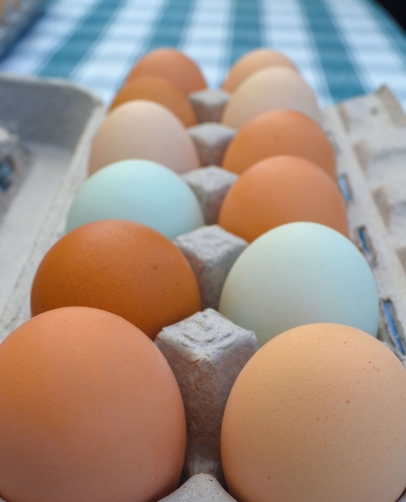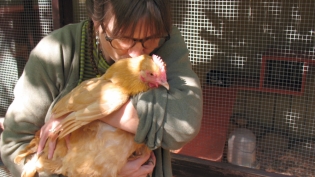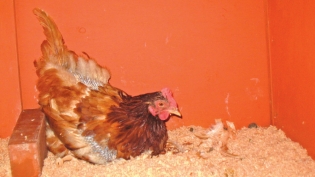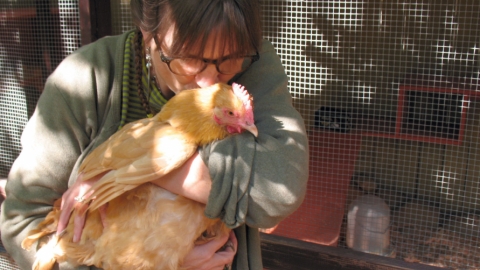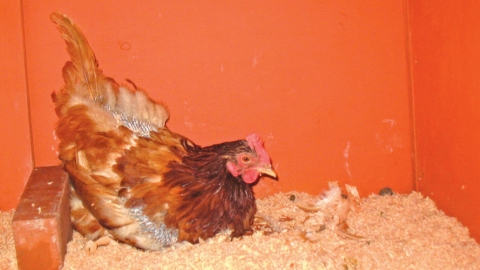Cracking the Egg Code
"If someone is willing to pay a few extra dollars for a dozen more ethically produced eggs, there is hope. … It proves that when presented with clear, compelling explanations about what they're eating, consumers will make purchases that reflect their ever-expanding food literacy. When consumers shop and eat according to their values, the food industry is forced to adapt."
–from Local: The New Face of Food and Farming in America by Douglas Gayeton
Deciding which egg is the "best" depends on what questions you ask. Are your concerns only nutritional? Are you concerned with the humane and ethical raising of the hens that produce them? Are you concerned about sustainability issues and the food miles involved in their production and distribution?
It is "buyer beware" in the egg market, and eggs should be assumed factory-farmed unless labeled cage-free, free-range or pastureraised. At a factory or "egg ranch," tens of thousands of hens are often raised in huge barns filled to capacity, with the birds confined to cages.
The cages are so small the birds can't turn around, and they are often de-beaked so they can't peck each other to death. The controversy over these practices led to the passage of Proposition 2 in California in 2008, and going into effect January 1, 2015.
This new law prohibits the confinement of all farm animals in a manner that does not allow them to turn around freely, lie down, stand up and fully extend their limbs. That law requires a chicken coop be 60 square feet and hold a maximum 60 chickens. (At that size, an at-capacity cage would allow one square foot per chicken. With the average chicken weighing 5.3 pounds, that doesn't seem overly spacious and yet it is still being challenged by several states selling in the California market.)
While the chicken-raising methods defined below are more humane than factory-farmed ones, owners are still permitted to cut the birds' beaks and starve the birds to force molting, according to the Humane Society of the United States (HumaneSociety.org).
Here's a guide to some of the terms that will help you make your choice.
Cage-free: Chickens that are not kept in cages but may still be confined to a barn with limited or no access to outside.
Fertile eggs: Eggs produced in a brood that has a rooster and likely not raised in a cage, according to the Humane Society. (Fertile eggs taste like unfertile eggs and have the same nutrition.) Fertilized eggs can be hatched into chicks under certain conditions.
Free-range: USDA regulations indicate only that the animal has been allowed access to the outside. These regulations do not specify the quality or size of the outside range nor the duration of time the animal must be allowed access to this space.
Pasture-raised: Animals that have been raised on pasture with access to shelter. This term is being used by farmers who wish to distinguish themselves from the industrialized "free-range" term.
Organic eggs: Organic eggs follow the USDA Organic certification process and may display a USDA seal on the carton. These chickens must have daily outdoor exercise in an area covered with natural vegetation that can't be treated with pesticides. Their feed and bedding must be organic as well, and they can't be given antibiotics or hormones.
IN AN EGG SHELL
Egg shell: Varies in color according to the chicken's breed and plays a vital role in protecting the egg from contamination. That's why you are advised not to buy cracked eggs or to wash them when you get home from the store. (USDA-graded eggs are already washed and sanitized.) The nutrient levels between white and brown eggs are "not significantly different," according to the USDA.
Egg yolk: Color may vary depending on the chicken's feed, and doesn't denote its nutritional content. The yolk contains three-quarters of the egg's calories, most of the vitamins and fat.
Egg white or albumen: Comprises two-thirds of the egg's volume and contains half its protein and riboflavin. A cloudy white means the egg is really fresh.
Egg grade: The USDA or a state agency grades eggs following USDA guidelines. Eggs are graded as AA, A or B, depending on the appearance of the shell, how the egg spreads when cracked open, the appearance of the yolk and its white, and the overall usability for cooking or baking, etc. The grade doesn't define the egg's nutrition.
DID YOU KNOW?
From ovulation to when a chicken lays an egg is about 25 hours. About 30 minutes later, the process begins all over again.


